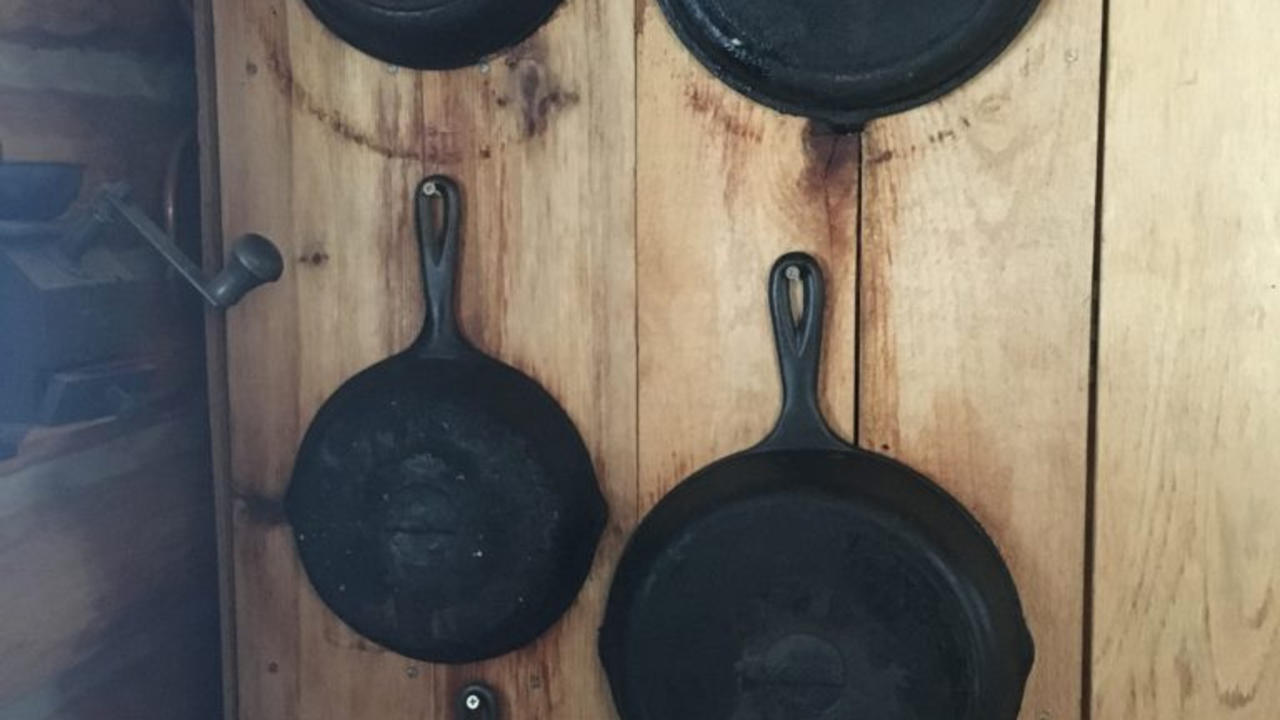Off Grid Cookware: What are Your Options

Those that are homesteaders and/or living off the grid know that this type of lifestyle is about getting back to the basics. Life is centered around frugality and self reliance. Everything on the homestead must have a purpose, if not several different functions, or it is in the way. The same is true for off grid cookware.
When you think about it, off grid cookware has to stand up to high heat and a variety of cooking methods. At any given time you may be cooking over an open fire, on a wood stove, a grill, propane stove, rocket or backpacking stove, a camp stove, or even in a hot box. Just like anything else, having the right equipment for the job makes all the difference in the world. The same is true for cooking. During the time I’ve lived off the grid, I’ve experimented with cooking in numerous ways. The end result is that I’ve found several types of off grid cookware that have stood the test of time.
Cast iron cookware

Cast iron is by far the best off grid cookware to have around the homestead. If properly cared for it is one of the most durable and versatile pieces of kitchen equipment you can find.
The versatility of this cookware is unparalleled. It can go from stovetop, to open fire, in or on the wood stove, and in your oven. I have used this type of cookware for many years and still have pots and pans from 25 years ago.
Most cast iron cookware comes pre-seasoned. If you do acquire unseasoned cookware, or need to re-season older cookware, the process is easy. Liberally coat the cookware with cooking oil, preheat the oven to 350 degrees F, turn the cookware up-side-down, bake for about one hour. If you warm the cookware slightly prior to coating with oil, the cast iron will absorb the oil much more readily.
As a person that loves to cook a variety of foods, one of the downsides to cast iron is that it can soak up flavors and odors and transfers that to other foods. I discovered this after using one of my pans to prepare Indian food. The iron absorbed the turmeric and it took several rounds of cooking to actually get the pan clean.
Pros of cast iron cookware
- Highly durable
- Highly versatile
- Lasts a lifetime with proper care
- Retains heat well
- Distributes heat evenly
- Imparts iron into the food
Cons of cast iron cookware
- Very heavy
- Not very portable
- Requires care and maintenance
- Heats up slowly
- Reactive to certain types of food, absorbs flavors that can be transferred to other foods
Stainless steel cookware

This is my second choice for off grid cookware. It is not as versatile as cast iron but comes in a close second. Some of the early challenges of stainless cookware included poor heat transfer. This was resolved by adding a copper bottom. However, this does increase the costs. Go for quality and you will get cookware that lasts a life time.
Pros
- Non-reactive: can cook any type of food with no flavor transfer
- Light weight
- Durable
- Long lasting
Cons
- Cost
- Not true non-stick cookware
- Cannot be used for baking
- Cannot place cookware in the wood stove
Aluminum cookware

The advantage to this cookware is its affordability. It is also very light weight and will last years with proper care. Although I use this type of cookware for limited applications, I do still use it regularly. My favorite popcorn popper is aluminum.
Pros
- Affordable
- Light weight and portable
- Transfers heat quickly
Cons
- Warps under high heat
- Reactive to alkaline or acidic foods
- Scratches easily
Enamel ware
This is another great off grid cookware. Enamel ware is cookware that is coated with porcelain enamel. It can have a steel, cast iron, or aluminum base. The porcelain lining makes the cookware easy to heat, easy to clean, and very durable. It is also very affordable. I often use this type of cookware on my wood stove.
Pros
- Durable
- Lightweight (cast iron version is heavy)
- Oven safe
- Non-reactive
- Good heat transfer and distribution.
Cons
- More expensive than aluminum
- Foods will stick if cooked under high heat unless stirred constantly
- Will eventually chip on the edges
The reality for me is that I have and use all of the off grid cookware listed above. What I use depends on what I am cooking and how I am cooking it. The enamel ware and cast iron are commonly used on the wood stove in the winter. The stainless steel (with a copper bottom) is not used on the wood stove because of the intense heat. I reserve this for cooking foods with strong taste and spices. The aluminum and less expensive stainless steel cookware have limited use at the cabin but is my first choice for backpacking because they are light weight and durable.
With a variety of durable off grid cookware even a pampered chef could be happy with cooking off the grid.
Other Posts of Interest
Off Grid Appliances: Options for Cooking Off Grid
Off Grid Refrigeration: Propane versus Electric
Go off grid and live well,
Patrick
Stay connected with us to receive regular updates.
Join our mailing list to receive the latest news and updates from our team. We always respect your privacy. Your information will never be shared.




